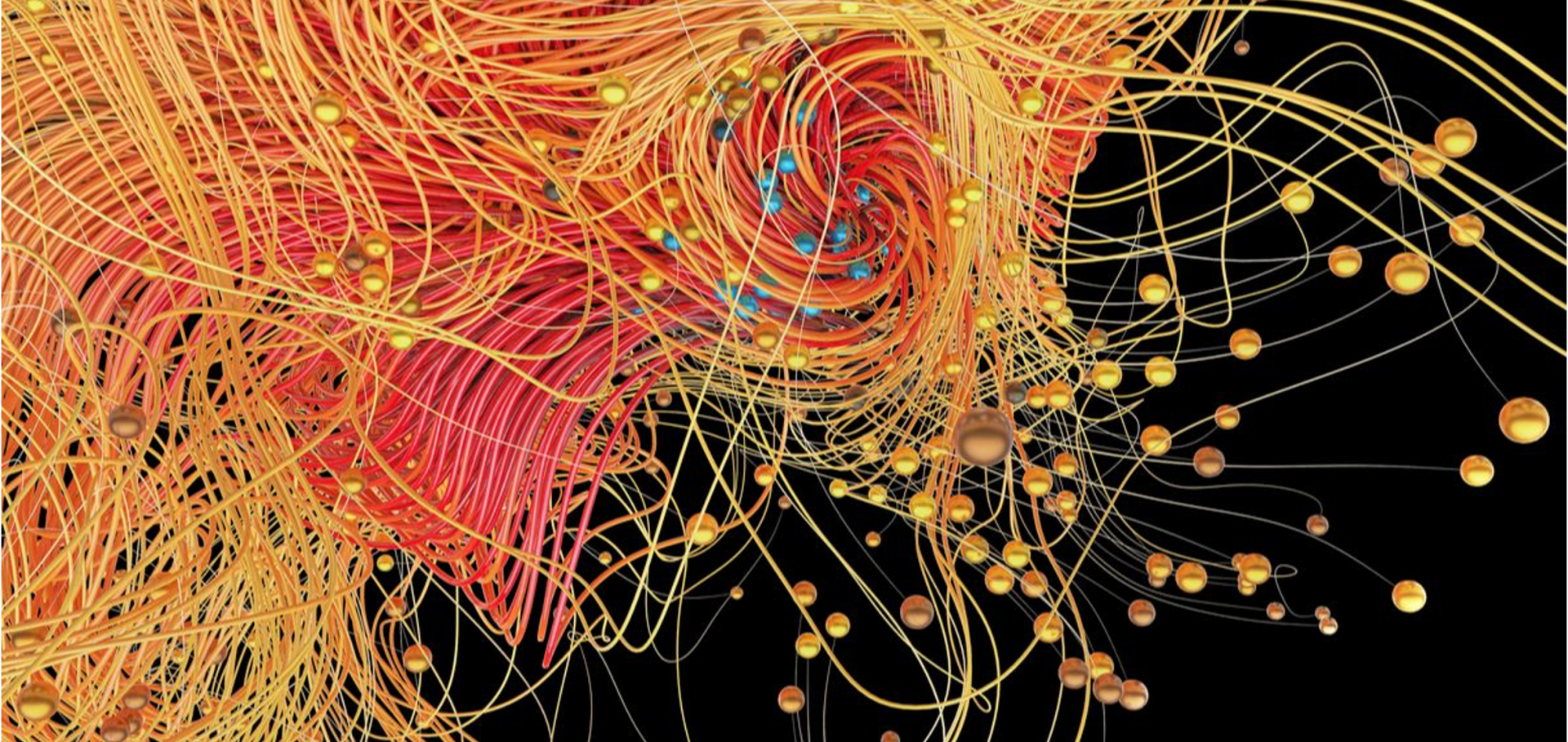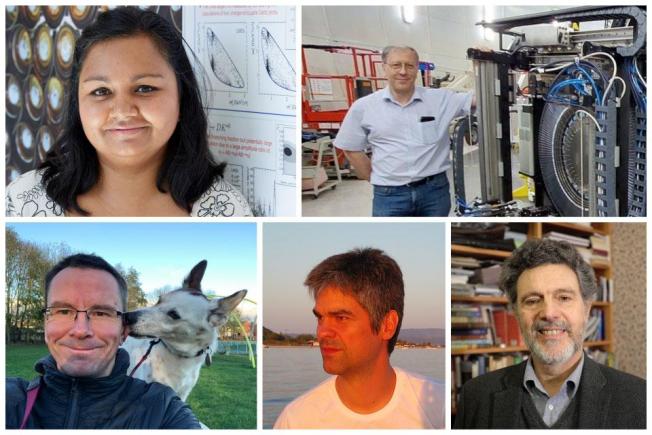Antiferromagnetic half-skyrmions and bimerons at room temperature
Nature Springer Nature 590:7844 (2021) 74-79
Abstract:
In the quest for post-CMOS (complementary metal–oxide–semiconductor) technologies, driven by the need for improved efficiency and performance, topologically protected ferromagnetic ‘whirls’ such as skyrmions1,2,3,4,5,6,7,8 and their anti-particles have shown great promise as solitonic information carriers in racetrack memory-in-logic or neuromorphic devices1,9,10,11. However, the presence of dipolar fields in ferromagnets, which restricts the formation of ultrasmall topological textures3,6,8,9,12, and the deleterious skyrmion Hall effect, when skyrmions are driven by spin torques9,10,12, have thus far inhibited their practical implementation. Antiferromagnetic analogues, which are predicted to demonstrate relativistic dynamics, fast deflection-free motion and size scaling, have recently become the subject of intense focus9,13,14,15,16,17,18,19, but they have yet to be experimentally demonstrated in natural antiferromagnetic systems. Here we realize a family of topological antiferromagnetic spin textures in α-Fe2O3—an Earth-abundant oxide insulator—capped with a platinum overlayer. By exploiting a first-order analogue of the Kibble–Zurek mechanism20,21, we stabilize exotic merons and antimerons (half-skyrmions)8 and their pairs (bimerons)16,22, which can be erased by magnetic fields and regenerated by temperature cycling. These structures have characteristic sizes of the order of 100 nanometres and can be chemically controlled via precise tuning of the exchange and anisotropy, with pathways through which further scaling may be achieved. Driven by current-based spin torques from the heavy-metal overlayer, some of these antiferromagnetic textures could emerge as prime candidates for low-energy antiferromagnetic spintronics at room temperature1,9,10,11,23.Polarizing an antiferromagnet by optical engineering of the crystal field
Nature Physics Nature Research 16 (2020) 937-941
Abstract:
Strain engineering is widely used to manipulate the electronic and magnetic properties of complex materials. For example, the piezomagnetic effect provides an attractive route to control magnetism with strain. In this effect, the staggered spin structure of an antiferromagnet is decompensated by breaking the crystal field symmetry, which induces a ferrimagnetic polarization. Piezomagnetism is especially appealing because, unlike magnetostriction, it couples strain and magnetization at linear order, and allows for bi-directional control suitable for memory and spintronics applications. However, its use in functional devices has so far been hindered by the slow speed and large uniaxial strains required. Here we show that the essential features of piezomagnetism can be reproduced with optical phonons alone, which can be driven by light to large amplitudes without changing the volume and hence beyond the elastic limits of the material. We exploit nonlinear, three-phonon mixing to induce the desired crystal field distortions in the antiferromagnet CoF2. Through this effect, we generate a ferrimagnetic moment of 0.2 μB per unit cell, nearly three orders of magnitude larger than achieved with mechanical strain.Observation of magnetic vortex pairs at room temperature in a planar α-Fe2O3/Co heterostructure
Nature Materials Nature Publishing Group 17 (2018) 581-585
Abstract:
Vortices, occurring whenever a flow field ‘whirls’ around a one-dimensional core, are among the simplest topological structures, ubiquitous to many branches of physics. In the crystalline state, vortex formation is rare, since it is generally hampered by long-range interactions: in ferroic materials (ferromagnetic and ferroelectric), vortices are observed only when the effects of the dipole–dipole interaction are modified by confinement at the nanoscale1,2,3, or when the parameter associated with the vorticity does not couple directly with strain4. Here, we observe an unprecedented form of vortices in antiferromagnetic haematite (α-Fe2O3) epitaxial films, in which the primary whirling parameter is the staggered magnetization. Remarkably, ferromagnetic topological objects with the same vorticity and winding number as the α-Fe2O3 vortices are imprinted onto an ultra-thin Co ferromagnetic over-layer by interfacial exchange. Our data suggest that the ferromagnetic vortices may be merons (half-skyrmions, carrying an out-of plane core magnetization), and indicate that the vortex/meron pairs can be manipulated by the application of an in-plane magnetic field, giving rise to large-scale vortex–antivortex annihilation.Giant Improper Ferroelectricity in the Ferroaxial Magnet CaMn7O12
PHYSICAL REVIEW LETTERS 108:6 (2012) ARTN 067201
The preparation and structures of hydrogen ordered phases of ice.
Science 311:5768 (2006) 1758-1761



